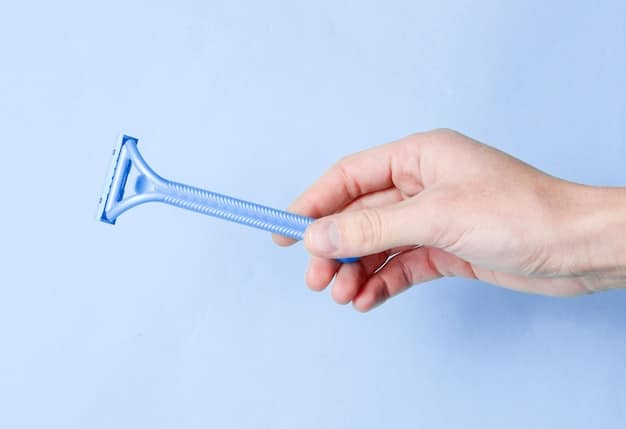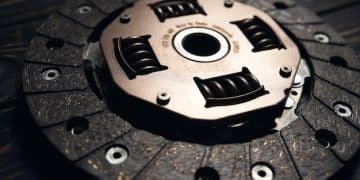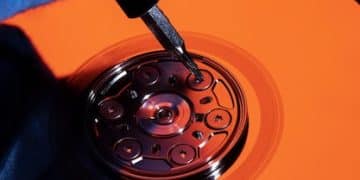Wiper Blade Replacement: When and How to Choose

Wiper blade replacement is essential for maintaining clear visibility while driving; typically, wiper blades should be replaced every 6 to 12 months, or sooner if you notice streaking, skipping, or squeaking.
Ensuring clear visibility is crucial for safe driving, and that’s where your windshield wipers come in. Knowing about wiper blade replacement: when to replace them and how to choose the right ones ensures you’re prepared for any weather condition, keeping your view unobstructed and your drive safe.
Why Timely Wiper Blade Replacement Matters
Maintaining your car involves numerous checks and replacements, and wiper blades often get overlooked. Yet, they’re a critical safety component, especially when driving in adverse weather. Timely replacement of your wiper blades ensures you have a clear view of the road, which can make all the difference in preventing accidents.
Worn or damaged wiper blades can leave streaks, smears, and blind spots on your windshield, reducing visibility significantly. This is particularly dangerous during heavy rain, snow, or when driving at night. Understanding the importance of wiper blade replacement: when to replace them and how to choose the right ones can dramatically improve your driving safety.
Enhancing Driving Safety
The primary reason to keep up with wiper blade replacement is enhanced driving safety. Clear visibility allows you to react more quickly to hazards, ensuring you have enough time to brake or maneuver safely. Replacing worn blades restores optimal visibility, preventing potential accidents.
Avoiding Costly Damages
Beyond safety, neglecting your wiper blades can lead to costly damages. Worn blades can scratch your windshield, requiring expensive repairs or complete replacement. Regular wiper blade replacement is a small investment that avoids these higher costs.
- Improved Visibility: New blades provide a clear, streak-free view.
- Increased Safety: Better visibility reduces accident risk.
- Cost Savings: Prevents windshield damage and potential repairs.
Ultimately, keeping up with wiper blade replacements is essential for both safety and economic reasons. Prioritizing clear visibility ensures a safer drive and saves you from potential repair costs.
Recognizing the Signs: When to Replace Wiper Blades
Knowing when to replace your wiper blades is crucial for maintaining optimal visibility. Various signs indicate that your blades are no longer functioning efficiently. By recognizing these signs early, you can ensure timely wiper blade replacement: when to replace them and how to choose the right ones, keeping your driving experience safe.
Pay attention to the performance of your wiper blades each time you use them. Common indicators of wear and tear include streaking, skipping, and unusual noises. Regular checks and awareness of these signs will help you stay ahead of potential visibility issues.

Common Indicators of Wear
Several common indicators suggest that your wiper blades need replacement. These include:
- Streaking: Noticeable lines of water or debris left on the windshield.
- Skipping: Blades that jump or vibrate across the surface, missing spots.
- Squeaking: Loud or unusual noises during operation.
- Smearing: A film of grime or water left behind, reducing clarity.
Frequency of Replacement
As a general guideline, replacing your wiper blades every 6 to 12 months is recommended. However, several factors can impact their lifespan. Climate, usage, and the quality of the blades themselves play significant roles. For instance, blades exposed to extreme heat or frequent use may require more frequent replacement.
Being proactive about checking your wiper blades ensures you catch issues early. Regular inspections can prevent sudden failures during critical moments, such as heavy rainstorms. Timely replacements maintain optimal visibility and safety, regardless of external conditions.
Choosing the Right Type of Wiper Blades
Selecting the correct wiper blades is essential for optimal performance and safety. Various types of wiper blades are available, each with unique features and benefits. Understanding these differences can help you choose the most suitable blades for your vehicle and driving conditions, contributing significantly to wiper blade replacement: when to replace them and how to choose the right ones.
Different types of wiper blades cater to different needs. From conventional frame blades to beam blades and specialized winter blades, knowing their specific advantages can ensure you make an informed decision. Consider factors like climate, vehicle type, and personal preferences to find the perfect fit.
Conventional Frame Blades
Conventional frame blades are the most common and affordable type. They feature a metal frame that holds the rubber blade against the windshield. These blades are adequate for moderate climates and general use.
Beam Blades
Beam blades, also known as flat blades, offer a more streamlined design. They apply consistent pressure across the entire blade surface, resulting in a smoother and more effective wipe. Beam blades are particularly useful in areas with heavy rain or snow.
Winter Blades
Winter blades are designed to withstand harsh weather conditions. They feature a rubber boot that protects the blade from ice and snow buildup. These blades are ideal for those living in regions with severe winters.
- Conventional Frame Blades: Affordable and suitable for moderate climates.
- Beam Blades: Consistent pressure, excellent for heavy rain or snow.
- Winter Blades: Designed for harsh, icy conditions with a protective rubber boot.
When choosing wiper blades, consider the specific demands of your local climate and your typical driving conditions. Opting for the right type can significantly improve visibility and safety, ensuring a clear view in any weather.
Step-by-Step Guide: How to Replace Wiper Blades
Replacing your wiper blades is a straightforward task that can be done at home with minimal tools. Knowing how to perform this maintenance yourself not only saves money but also ensures your vehicle is always equipped with functional blades. This practical guide to wiper blade replacement: when to replace them and how to choose the right ones will walk you through each step, making the process easy.
Before you begin, gather the necessary tools and the correct replacement blades for your vehicle. Generally, you’ll need a pair of new wiper blades, gloves to protect your hands, and possibly a small screwdriver or pliers, depending on the type of blades and your vehicle’s attachment mechanism.
Preparing for the Replacement
Start by raising the wiper arms away from the windshield. This provides easy access to the blades and prevents accidental damage to the glass. Gently lift the arms until they lock into an upright position. If your vehicle has a specific service mode for wiper blade replacement, consult your owner’s manual for instructions.

Removing the Old Blades
Once the wiper arms are raised, locate the release mechanism on the old blades. This mechanism varies depending on the blade type and vehicle model. Common types include a small tab that needs to be pressed, a clip that needs to be unlatched, or a slide that needs to be moved. Consult your vehicle’s manual or look for markings on the blade assembly if you’re unsure.
Installing the New Blades
With the old blades removed, it’s time to install the new ones. Align the new blade with the wiper arm, ensuring it’s facing the correct direction. Attach the blade by sliding it into the arm until you hear or feel a click, indicating it’s securely locked in place. Double-check that the blade is firmly attached before lowering the wiper arm.
- Raise Wiper Arms: Lift the arms away from the windshield.
- Remove Old Blades: Locate and release the attachment mechanism.
- Install New Blades: Align and secure the new blades to the wiper arms.
- Test the Blades: Ensure smooth and effective operation.
After installing the new blades, gently lower the wiper arms back onto the windshield. Test the blades by activating the windshield wipers and spraying washer fluid. Watch for any streaks, skipping, or unusual noises. If everything appears normal, you’ve successfully replaced your wiper blades.
Extending the Lifespan of Your Wiper Blades
While regular replacement is necessary, several maintenance practices can extend the lifespan of your wiper blades. Proper care ensures they remain effective for longer, reducing the frequency of replacements and saving you money. Understanding these tips for wiper blade replacement: when to replace them and how to choose the right ones helps maintain optimal visibility.
Regular cleaning, proper usage, and protection from the elements are key factors in extending the life of your wiper blades. Incorporating these practices into your car maintenance routine will ensure your blades perform well for as long as possible.
Regular Cleaning
One of the simplest ways to extend the lifespan of your wiper blades is to clean them regularly. Dirt, debris, and grime can accumulate on the blades, reducing their effectiveness and causing streaks. Use a soft cloth or sponge and mild soap to gently wipe the blades clean. Avoid using harsh chemicals or abrasive cleaners, which can damage the rubber. Cleaning the blades every few weeks will keep them performing efficiently.
Proper Usage
Avoid using your windshield wipers on a dry windshield. Doing so can cause the rubber to tear and wear out quickly. Always use washer fluid when operating the wipers to lubricate the surface and prevent damage. Additionally, avoid using the wipers to remove heavy snow or ice, as this can strain the blades and shorten their lifespan.
Protection from the Elements
Exposure to extreme weather conditions can degrade wiper blades over time. In hot climates, the sun’s UV rays can cause the rubber to crack and dry out. In cold climates, ice and snow can freeze the blades to the windshield, causing damage when the wipers are activated. Park your car in a garage or shaded area to protect the blades from these elements. In winter, lift the wiper arms away from the windshield to prevent them from freezing.
- Clean Regularly: Remove dirt and debris with a soft cloth and mild soap.
- Use Properly: Always use washer fluid and avoid dry wiping.
- Protect from Elements: Park in shade or lift blades in winter.
By incorporating these maintenance practices into your car care routine, you can significantly extend the lifespan of your wiper blades. Regular cleaning, proper usage, and protection from the elements ensure your blades remain effective and save you money in the long run.
The Impact of Climate on Wiper Blade Lifespan
Climate plays a significant role in determining how long your wiper blades last. Extreme weather conditions, whether scorching heat or freezing temperatures, can accelerate the wear and tear of these essential car components. Understanding how different climates affect wiper blades is crucial for maintaining them effectively and planning for timely wiper blade replacement: when to replace them and how to choose the right ones.
Different regions experience varying weather patterns, each posing unique challenges for wiper blades. From the intense sun of desert climates to the icy conditions of northern states, knowing how your local climate impacts your blades can help you take proactive maintenance measures.
Hot Climates
In hot, sunny climates, the rubber on wiper blades can dry out and crack due to prolonged exposure to ultraviolet (UV) rays. High temperatures can also cause the rubber to become brittle, reducing its ability to effectively clear the windshield. If you live in a hot climate, consider using wiper blades made from UV-resistant materials and parking your car in the shade to minimize sun exposure.
Cold Climates
Cold climates present their own set of challenges for wiper blades. Ice and snow can freeze the blades to the windshield, and attempting to use the wipers in this condition can tear the rubber or damage the blades. The repeated freezing and thawing can also weaken the rubber, leading to cracks and reduced performance. In cold climates, use winter wiper blades designed to withstand icy conditions and lift the blades away from the windshield when parking to prevent freezing.
Coastal Climates
Coastal climates, with their high humidity and salty air, can also impact the lifespan of wiper blades. Salt can corrode the metal components of the blades and cause the rubber to deteriorate more quickly. Regular cleaning of the blades can help remove salt buildup and extend their lifespan. Consider using wiper blades designed for marine environments or those made from corrosion-resistant materials.
- Hot Climates: UV rays cause cracking and drying.
- Cold Climates: Freezing damages rubber and blades.
- Coastal Climates: Salt corrodes metal and degrades rubber.
Knowing and understanding your local climate allows you to take tailored care of your wiper blades, ensuring they remain effective for as long as possible. Proper maintenance and timely replacements are key to maintaining optimal visibility and safe driving conditions.
| Key Point | Brief Description |
|---|---|
| 🗓️ Replacement Frequency | Replace wiper blades every 6-12 months. |
| ⚠️ Wear Indicators | Look for streaking, skipping, or squeaking sounds. |
| 🌡️ Climate Impact | Hot and cold climates can shorten blade lifespan. |
| 🛠️ Maintenance Tips | Clean blades regularly and use washer fluid. |
Frequently Asked Questions (FAQ)
▼
Wiper blades should typically be replaced every 6 to 12 months. However, this can vary based on climate, usage, and the quality of the blades themselves.
▼
Common signs include streaking, skipping, squeaking, and smearing on the windshield. If you notice any of these, it’s time to consider replacement.
▼
Replacing wiper blades is a straightforward task that most car owners can do themselves. Follow the instructions in your vehicle’s manual for guidance.
▼
Consider your local climate and driving conditions when choosing wiper blades. Beam blades are great for heavy rain, while winter blades are ideal for icy conditions.
▼
Regularly clean your wiper blades with a soft cloth and mild soap. Avoid using them on a dry windshield and protect them from extreme weather conditions.
Conclusion
In conclusion, understanding the importance of wiper blade replacement: when to replace them and how to choose the right ones is vital for maintaining safe driving conditions. By recognizing the signs of wear, selecting the appropriate blades, and following simple maintenance tips, you can ensure clear visibility and a safer driving experience in any weather.





